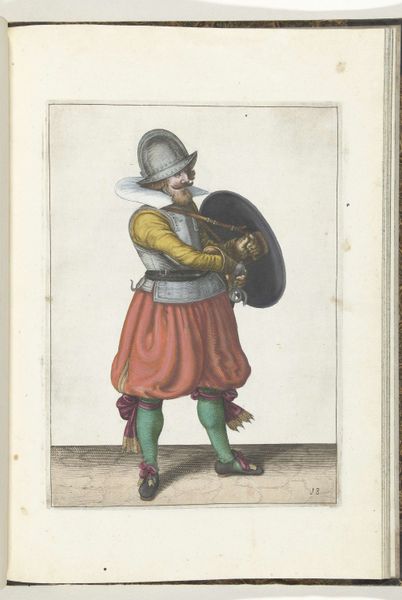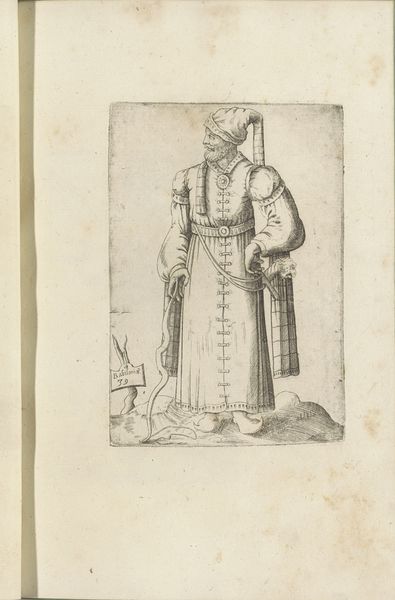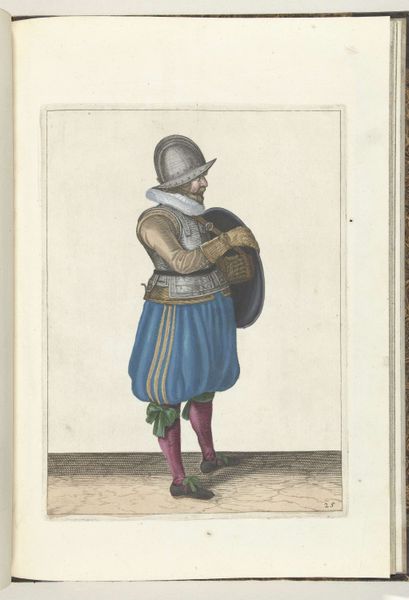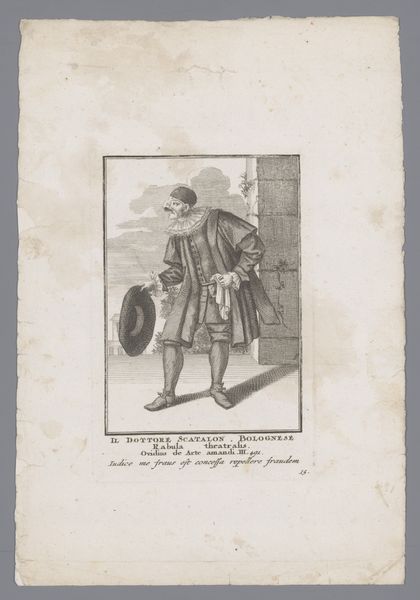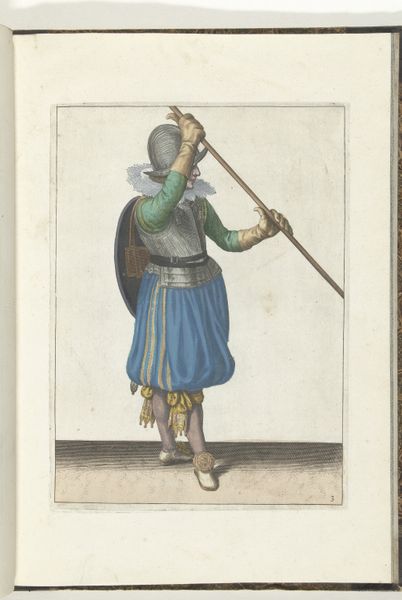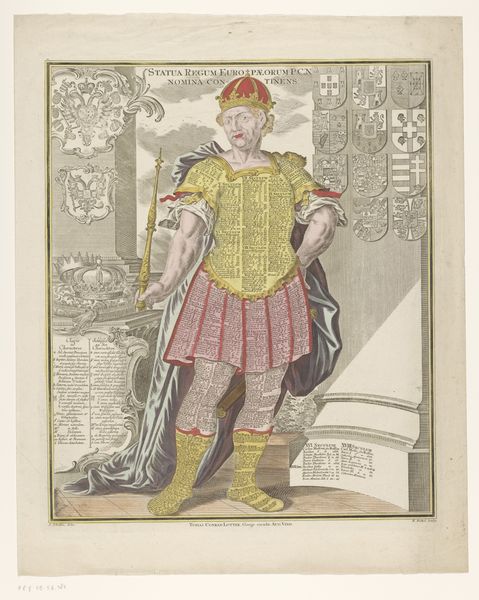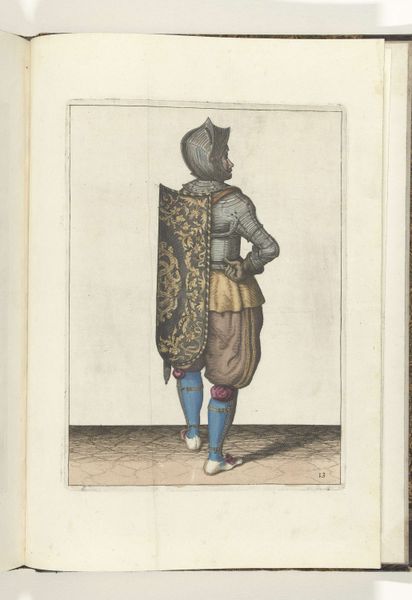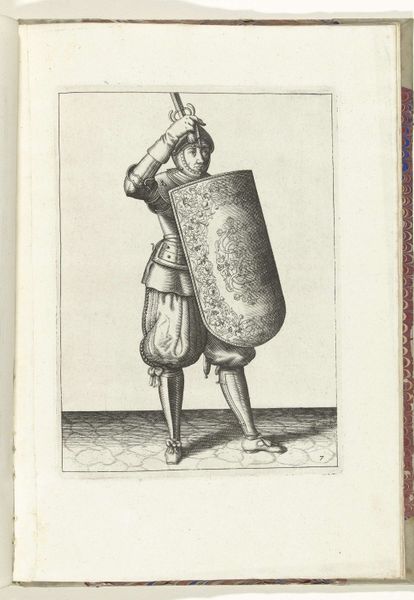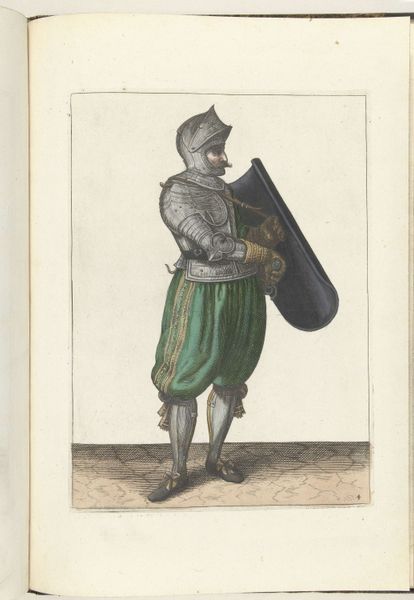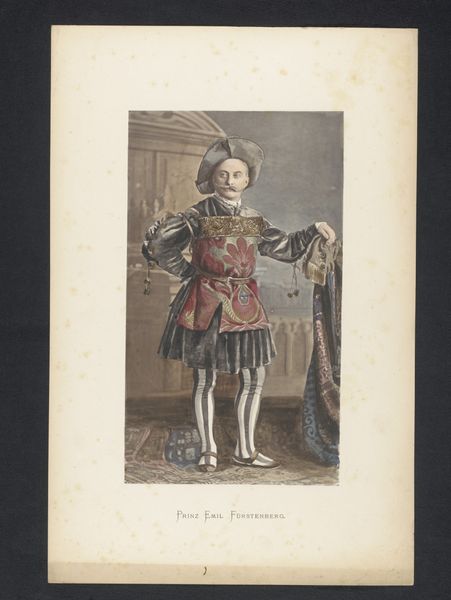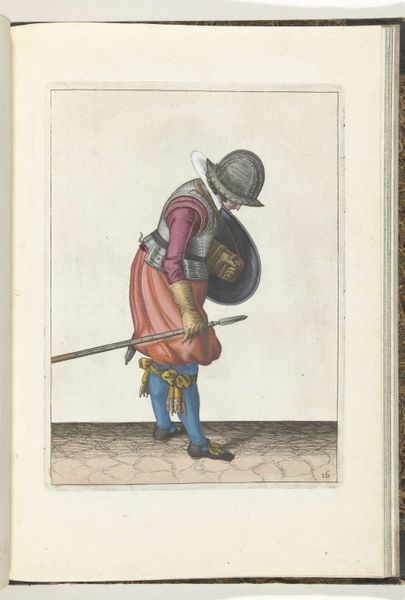
drawing, print, paper, engraving
#
portrait
#
drawing
#
baroque
# print
#
figuration
#
paper
#
historical fashion
#
coloured pencil
#
genre-painting
#
engraving
Dimensions: height 318 mm, width 200 mm
Copyright: Rijks Museum: Open Domain
Curator: Here we have "Man met een kostuum van boekbindersgereedschap," or "Man with a costume of bookbinder's tools," created sometime between 1708 and 1756. This piece, held at the Rijksmuseum, is an engraving with some color. Editor: My initial reaction is, well, playful absurdity! The figure, constructed almost literally of his trade, strikes a strangely formal pose. The attention to detail, rendering the tools is precise but then so surreal when incorporated into his apparel. Curator: It’s a fascinating example of occupational representation. This piece presents not just a profession but embodies it quite literally. The subject becomes a walking, talking embodiment of the means of production of bookbinding. This almost carnivalistic form of historical fashion, allows a reading into societal views about class, and maybe about the value or performance of labor. It's hard not to wonder how class and guilds dictated fashion codes and ways of performance in that era. Editor: That embodiment is compelling, especially considering the array of tools—the hammer, knives, and even the books themselves forming his attire. They aren't just symbols but functional objects attached to him, almost like a cyborgian augmentation. Curator: Exactly. This era sees the rise of print culture, where access to knowledge begins to democratize. Consider the implications of fashioning oneself from knowledge itself, literally displaying the tools of literary and intellectual labour. Editor: And there’s a figure in the background laboring away, adding depth, showing not only the process of making books but situating him firmly in the context of workshop culture. His figure blends somewhat to the background and its setting with ruins and building sites; as opposed to the centered subject. It’s all incredibly self-conscious. Curator: These sorts of prints often served didactic and propagandistic purposes. One interpretation would say it functions to highlight the importance and dignity of labor in this growingly industrious, mercantilist world, it can be seen in tension of a time grappling with shifting social identities through these constructed performances. Editor: True. And I find myself wondering about the intended audience. Did bookbinders themselves engage with such images? Was this a source of pride, satire, or something in between? Either way it highlights just how much significance even 'craft' and its tools hold as reflections of our self image. Curator: Well, it leaves one to ponder the value assigned to intellectual and manual labor then, versus the culture that creates us now. A truly multilayered historical lens on intersectionality! Editor: Agreed! Looking closer to objects often shows us the things in which we place value both aesthetically and professionally—what images they hold and the values those might project both today, and back then.
Comments
No comments
Be the first to comment and join the conversation on the ultimate creative platform.

